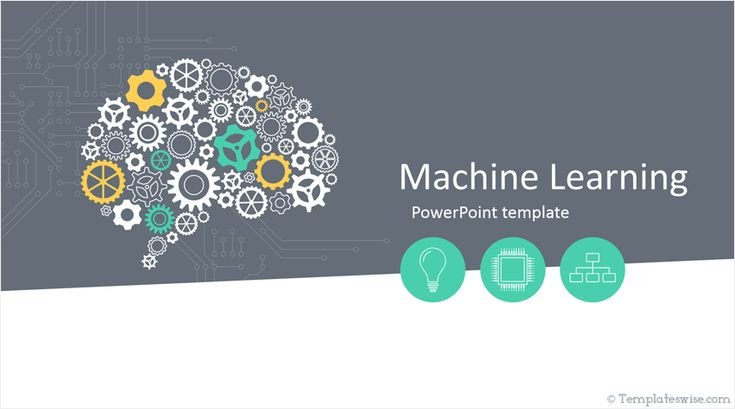Machine learning (ML) has become one of the most talked-about technologies of the decade. It powers everything from recommendation systems and voice assistants to self-driving cars and healthcare diagnostics. Businesses, researchers, and media alike tout its potential to revolutionize industries and transform how we live and work. But amidst all the excitement, a question arises: is machine learning currently overhyped?
While machine learning has achieved remarkable advancements, the conversation often strays from its actual capabilities, creating unrealistic expectations. In this blog, we’ll explore both the hype and the reality of machine learning, examining its true potential, limitations, and whether the excitement surrounding it is justified.
1. The Hype Around Machine Learning
Machine learning has been at the forefront of technological discussions for good reason. Its ability to process vast amounts of data, identify patterns, and make predictions has sparked excitement in industries ranging from finance to healthcare. This rapid adoption and media focus have led to soaring expectations for what machine learning can accomplish.
Key drivers of the hype:
- Automation and AI: ML is often viewed as the driving force behind artificial intelligence, with promises of automating jobs, enhancing decision-making, and creating intelligent systems.
- Success Stories: Companies like Google, Amazon, and Tesla have shown the power of ML in creating highly efficient, profitable, and innovative systems like recommendation engines, smart assistants, and autonomous vehicles.
- Emerging Technologies: ML is closely tied to other buzzwords like big data, IoT, and AI, creating an impression that it’s a magical tool capable of solving any problem.
Media coverage often emphasizes ML’s capabilities without fully exploring its limitations. As a result, the technology sometimes gets portrayed as a universal solution, leading to inflated expectations.
2. The Reality of Machine Learning
While the potential of machine learning is significant, it’s important to recognize that ML is not a magic wand. Its current applications, while impressive, have limitations that need to be understood.
Key limitations include:
- Data Dependency: Machine learning algorithms require massive amounts of high-quality data to be effective. Without sufficient or clean data, models can perform poorly, leading to unreliable results.
- Specialized Expertise: Building and maintaining ML models requires specialized skills in data science, programming, and algorithm design. Not every company or organization has the necessary expertise to implement ML effectively.
- Narrow Applications: Most ML systems are designed for specific tasks, like image recognition or language translation. These systems excel in narrow fields but cannot generalize across different domains. For instance, a model trained to detect objects in images can’t be used to diagnose diseases without extensive retraining and data adjustments.
- Bias and Ethics: ML models are only as good as the data they’re trained on. If the training data is biased, the model’s predictions will also be biased, leading to ethical concerns, especially in areas like hiring, policing, and lending.
- Computational Resources: Machine learning can be computationally expensive, requiring significant hardware and cloud infrastructure, which may not be accessible to all businesses.
While the technology can bring about transformative results in specific contexts, the belief that machine learning can solve all problems without challenges is a misconception.
3. Common Misconceptions Fueling the Hype
Several misconceptions contribute to the overhyping of machine learning, often leading to unrealistic expectations about what the technology can deliver.
Common misconceptions:
- ML Equals AI: Many people use the terms “machine learning” and “artificial intelligence” interchangeably. While ML is a subset of AI, it is not synonymous with true artificial intelligence, which includes areas like reasoning, creativity, and general intelligence. Current ML systems are far from achieving the level of thinking and understanding that AI is often imagined to have.
- ML Can Understand Data: Machine learning models don’t understand data the way humans do. They learn from patterns and correlations in data but don’t “understand” the context or meaning behind those patterns. This can lead to flawed conclusions if the model is used outside its intended context.
- ML Automatically Learns: Many assume that once an ML model is built, it can continue to learn and improve without human intervention. In reality, models need continuous maintenance, monitoring, and retraining as new data becomes available or business objectives change.
- Instant Results: Machine learning is often seen as a quick solution. However, the process of gathering data, training models, and deploying solutions takes time. Many projects face delays due to data quality issues, the need for extensive fine-tuning, or changes in the business landscape.
These misconceptions can make ML seem more powerful and versatile than it truly is, leading to disappointment when real-world applications don’t meet the inflated expectations.
4. Where Machine Learning Excels
Despite the hype, there’s no denying that machine learning has had a transformative impact in several areas. When applied correctly, ML can produce powerful insights and innovations, especially in fields where massive amounts of data are readily available.
Successful applications of machine learning:
- Healthcare: ML algorithms are being used to analyze medical images, predict disease outbreaks, and even suggest personalized treatment plans. This has the potential to revolutionize diagnostics and patient care.
- Finance: From fraud detection to algorithmic trading, machine learning has become a staple in the financial industry, providing better risk management and faster decision-making.
- Marketing and Personalization: Recommendation engines on platforms like Netflix and Amazon use ML to provide personalized suggestions to users, improving user experience and driving engagement.
- Autonomous Vehicles: Self-driving cars rely heavily on machine learning to interpret sensor data and make real-time driving decisions. Though fully autonomous cars are still a work in progress, ML has pushed the automotive industry closer to this goal.
In these areas, ML is delivering real value, but even here, it’s crucial to recognize the limits of what current technology can do.
5. Balancing Hype with Realistic Expectations
While machine learning has enormous potential, it’s important to strike a balance between excitement and practicality. The key to navigating the hype is understanding both the possibilities and the limitations of the technology.
How to manage expectations:
- Set Realistic Goals: ML can solve many problems, but not all. It’s important to have a clear, focused goal for machine learning projects and understand the data requirements and limitations before jumping in.
- Understand the Resources Required: Machine learning often requires specialized talent, time, and computing power. Businesses must be prepared for the initial investment in both time and resources.
- Monitor Ethical Concerns: As machine learning continues to evolve, addressing ethical concerns like bias, privacy, and transparency is critical. These factors should be considered from the outset in any ML initiative.
- Continual Learning and Adaptation: Machine learning is an evolving field, and keeping up with the latest advancements is necessary for long-term success. Even after a model is deployed, continual monitoring and adjustment are key to maintaining performance.
Conclusion: Is Machine Learning Overhyped?
While machine learning is certainly one of the most exciting and impactful technologies of our time, it is also often overhyped. The technology offers tremendous potential but is not without its challenges and limitations. The inflated expectations around ML are often the result of misconceptions about what it can achieve.
When applied correctly, machine learning can deliver groundbreaking solutions, but it’s essential to approach it with realistic expectations. Rather than viewing ML as a silver bullet for all problems, we should recognize it as a powerful tool that, when used appropriately, can significantly enhance decision-making, automation, and innovation.





